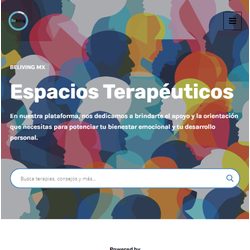
El cambio
In a rapidly evolving environment, both on a personal and professional level, the concepts of adaptability and resistance to change play a crucial role. Although they are often mentioned together, they represent very different approaches to the transformations we face in life. Understanding these differences may be the key to thriving in an ever-changing world.
What is Adaptability?
Adaptability is the ability to adjust to new conditions. In simple terms, it is the ability to accept and manage change effectively. Adaptable people tend to be flexible, open to new ideas, and willing to learn. They see change not as a threat, but as an opportunity to grow, improve and explore new possibilities.
In a business context, adaptability is essential for survival and success. Companies that adapt quickly to new market trends, technological advances or changing customer expectations often maintain a competitive advantage. Similarly, employees who are adaptable become valuable resources, able to take on new roles, learn new skills, and contribute significantly to organizational success.
Characteristics of Adaptable People:
- Flexibility: Ability to change course when necessary.
- Mental Openness: Willingness to consider new ideas and approaches.
- Resilience: Ability to recover from setbacks and move forward.
- Proactivity: Tendency to anticipate and prepare for change, rather than react to it.
What is Resistance to Change?
Resistance to change, on the other hand, refers to the tendency to avoid or reject new ideas, processes or conditions. People or institutions resistant to change often cling to what is known, preferring to maintain the status quo rather than face the uncertainty that change can bring. This can be due to several factors, such as fear of the unknown, lack of confidence in one's abilities to adapt, or an emotional attachment to old ways of doing things.
In business, resistance to change can be a significant barrier to progress. Companies that resist adopting new technologies, for example, can quickly become obsolete. On an individual level, resistance to change can limit personal and professional growth, preventing a person from taking advantage of new opportunities.
Characteristics of Resistance to Change:
- Fear of the Unknown: Concern about the uncertainty of the future.
- Attachment to the Status Quo: Preference for keeping things as they are.
- Insecurity: Doubt about one's ability to handle change.
- Distrust: Belief that change will not bring benefits or that it may cause harm.
Adaptability vs. Resistance to Change: The Balanced Approach
Although adaptability is an extremely valuable quality, resistance to change is not always negative. In some cases, it may be prudent to question and critically evaluate changes before accepting them. This can prevent hasty decisions that could have negative long-term consequences.
The ideal approach is to find a balance: being adaptable and open to change, but also knowing when to resist and question change based on values, goals and long-term vision. This balance allows people and organizations to effectively navigate a constantly evolving environment, taking advantage of the opportunities that change brings, while protecting themselves against unnecessary risks.
How to Foster Adaptability and Reduce Resistance to Change
To foster adaptability, it is essential to create an environment that values innovation and continuous learning. Organizations can:
- Promote Education and Development: Offer training programs that help employees acquire new skills.
- Foster an Open Culture: Encourage open communication and collaboration between teams.
- Recognize and Reward Flexibility: Value those who demonstrate adaptability and willingness to take on new challenges.
On the other hand, to reduce resistance to change, it is crucial to:
- Involve People in the Process: Have employees participate in the planning and execution of the change.
- Communicate Clearly the Benefits of Change: Explain how the change will improve working conditions, efficiency or competitiveness.
- Emotionally Support: Recognize that change can be difficult and provide the necessary support to facilitate the transition.
Conclusion
Adaptability and resistance to change are two sides of the same coin, both necessary in the right measure. The key is knowing when to adapt and when to resist, evaluating each situation based on your particular objectives and circumstances. In a world where change is the only constant, developing the ability to adapt while questioning what is necessary can be the recipe for personal and professional success.

